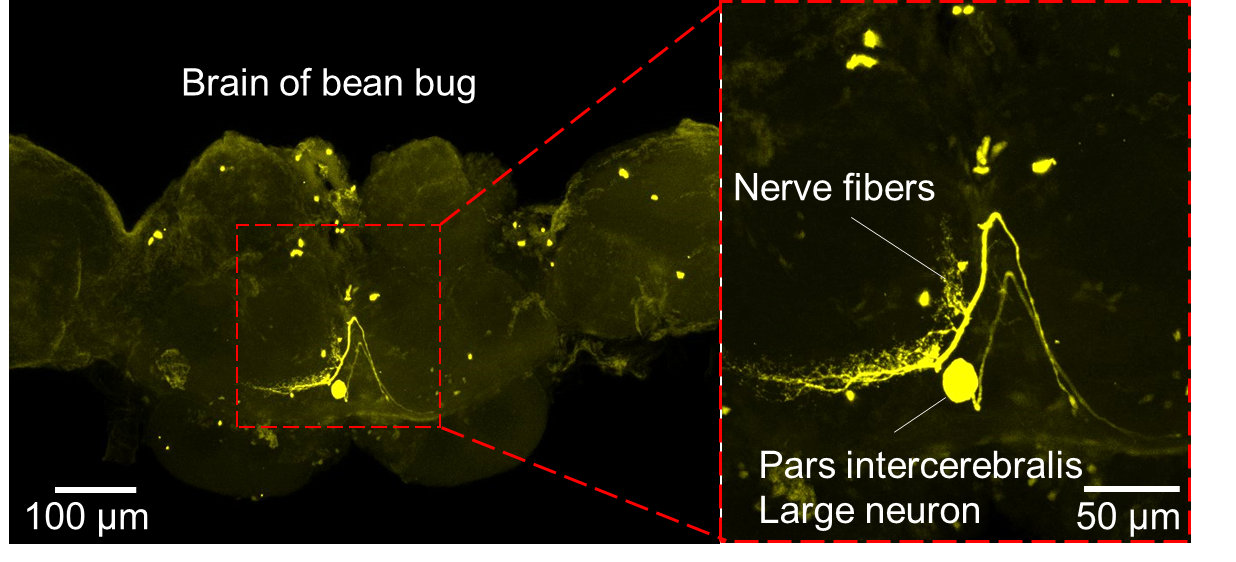
Brain seasonality: Bean bug neurons need biological clock gene for seasonal egg-laying
Researchers from Osaka University find that a circadian clock gene is needed for a day length-dependent response in insect neurons that promote egg-laying
Biological clocks don’t just tick for humans, they’re needed by most animals. Researchers from Japan have discovered that insect neurons that promote egg-laying need a biological clock gene for a day length-dependent adaptive cellular response.
In a study published in Proceedings of the National Academy of Sciences, researchers from Osaka University have revealed for the first time that a day length-dependent response in insect neurons that promote egg-laying requires a circadian clock gene, known as period.
Animals that live in seasonally changing environments adjust their physiology and behavior depending on the period of day length to adapt to different seasons. Circadian clocks – a type of biological clock with about the same period as the day–night cycle – allow animals to adapt seasonally. An organism’s response to day length that allows it to adapt to seasonal changes is known as a photoperiodic response.
“Photoperiodic response via a circadian clock is considered to be important for seasonal regulation of physiological functions like reproduction, temperature tolerance and the accumulation of nutrients,” says lead author of the study Masaharu Hasebe. “This mechanism appears to be basically similar between insects and mammals.”
To investigate the role of the photoperiodic response of neurons and how it relates to circadian clock genes, the researchers analyzed this response at the cellular level, specifically regarding circadian clock gene expression in the brains of bean bugs (Riptortus pedestris). Bean bugs show distinct photoperiodic responses in their reproduction, and because of their genetics and neuroanatomy, they provide a good model for looking at photoperiodic responses based on circadian clock genes in cells involved in controlling reproduction.
“We found insect neurons that respond to seasonal changes in day length using the insect’s circadian clock,” explains senior author Sakiko Shiga. “These neurons promote oviposition (egg-laying), and our single-cell analysis showed that a circadian clock gene was necessary for a day length-dependent response in these neurons.”
The team focused on the large cells of the pars intercerebralis, a brain region important for promoting egg-laying in bean bugs.
“Although it is becoming increasingly accepted that circadian clock genes are important to photoperiodic responses, it hasn’t been clear until now how information about day length is encoded at the level of cells or circuits based on the clock genes,” says Hasebe.
The combination of methods used in this study will help to clarify the importance of the circadian clock’s molecular basis in photoperiodic encoding within cells. Future such studies will further the understanding of how animals’ brains process seasonal information in their responses to day length.

Figure 1
The activity of oviposition-promoting neurons changes dramatically according to day length, and the circadian clock gene, period, is required for the response.

Figure 2
Photographs showing an oviposition-promoting neuron.
The article, “Oviposition-promoting pars intercerebralis neurons show period-dependent photoperiodic changes in their firing activity in the bean bug,” was published in Proceedings of the National Academy of Sciences of the United States of America at DOI: https://doi.org/10.1073/pnas.2018823118
Related Links
Hasebe Masaharu (Researchers Database)
